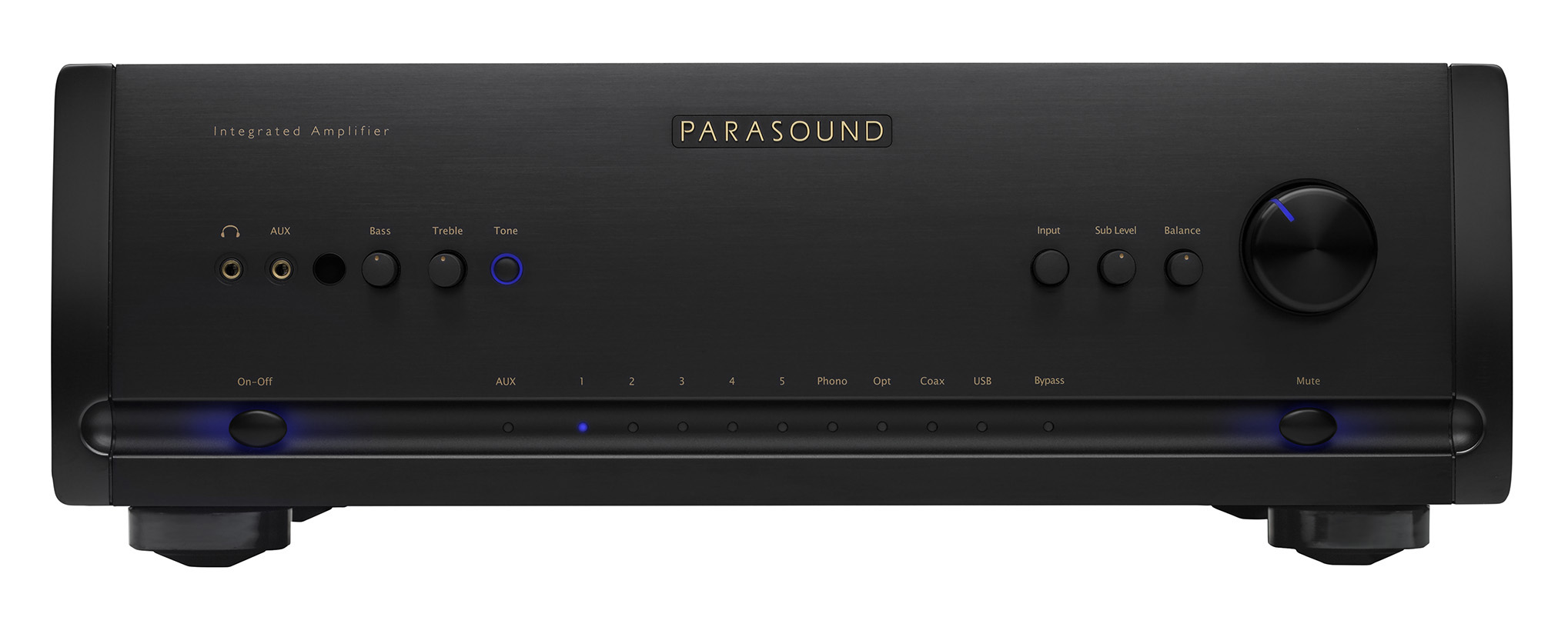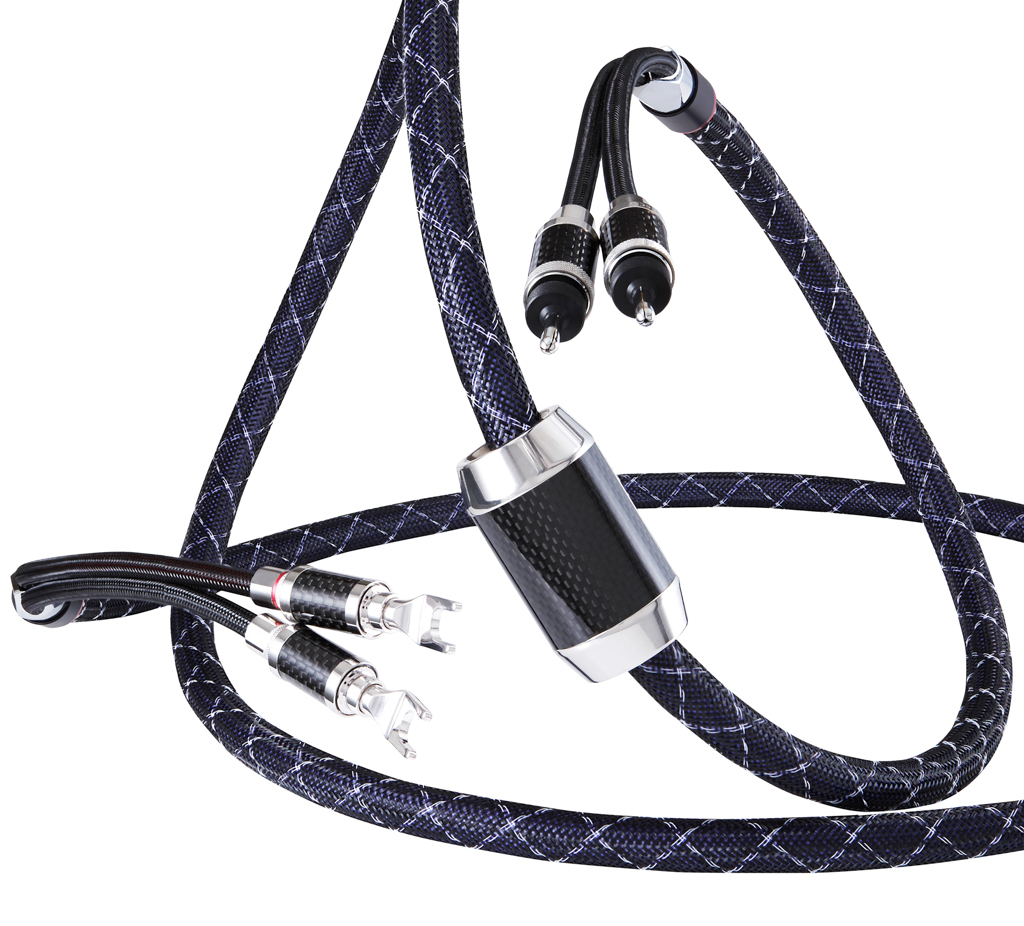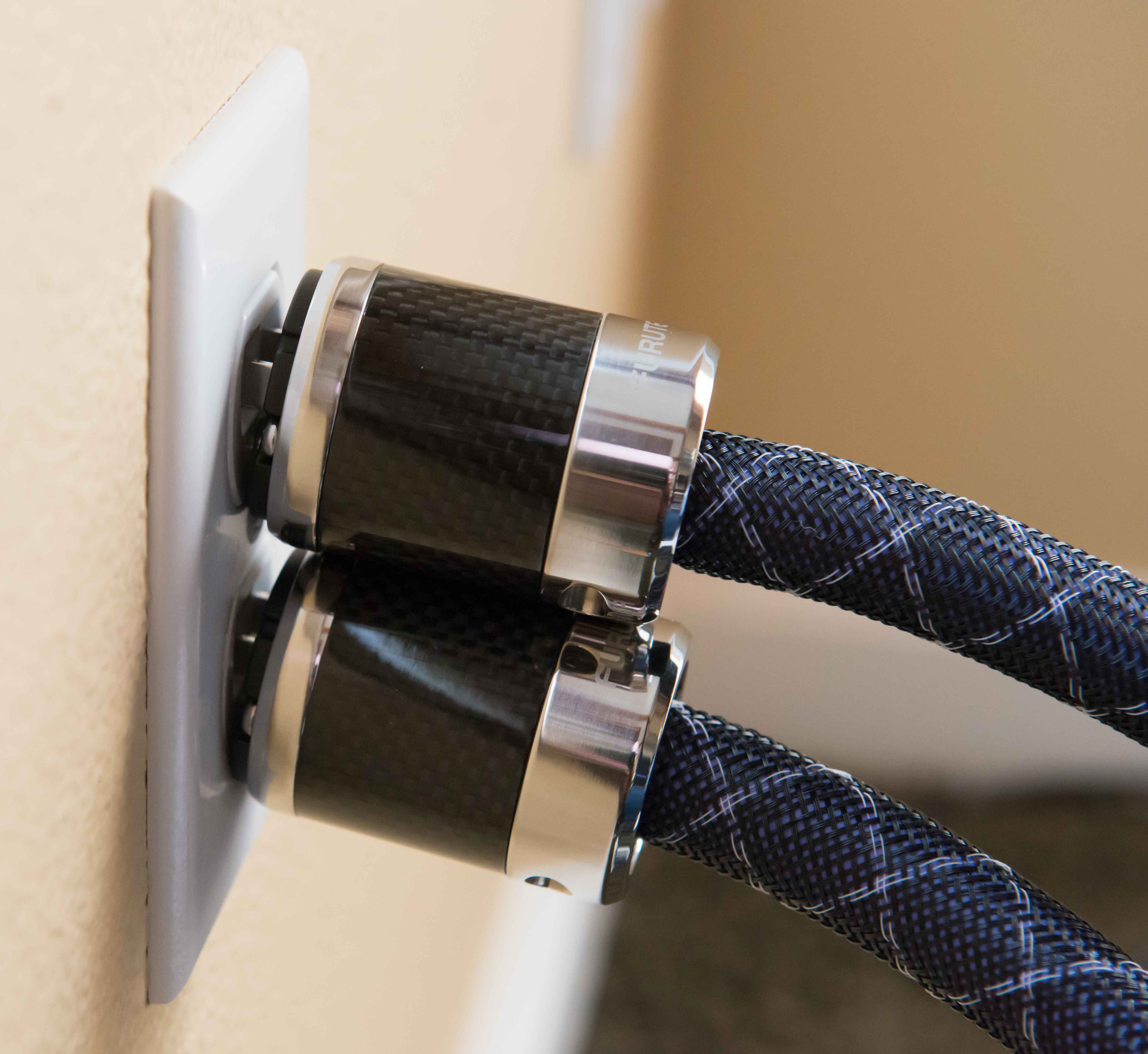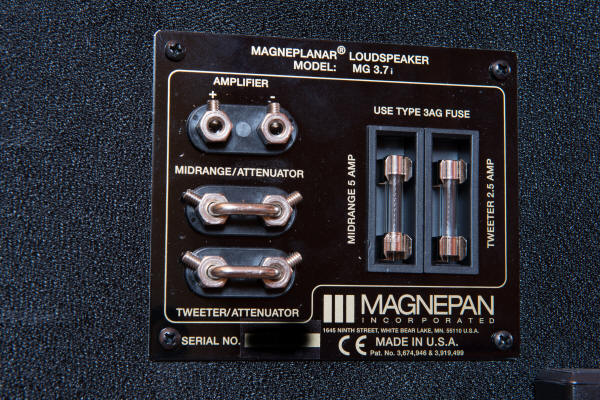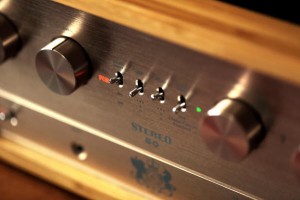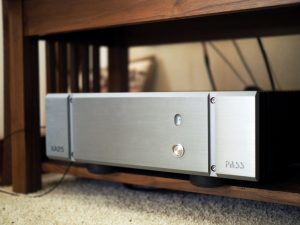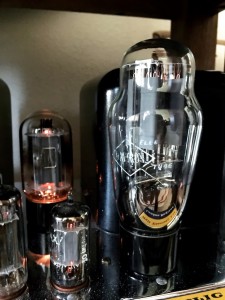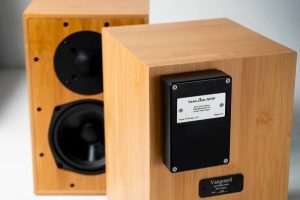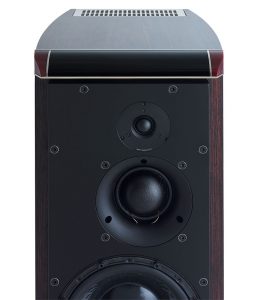
Background
You always remember your first love. In my case, at least audio-wise, that was with a pair of Magnepan 3.3's. I was struck by the way the sound filled the listening room—it sounded like the entire wall was radiating sound. Not just any sound, but crystal-clear sound. I still remember the way the highs seemed to float in the air—the magic of the full-length ribbon tweeter. That was 23 years ago.
Over the years I did acquire some Magnepans. My wonderful wife, Lord bless her, gave me my first pair of Maggies—the entry level MMGs. While significantly different from the 3 series, they provided good sound for the dollar, and at that time we didn't have a lot of dollars to spend on audio equipment. My local Magnepan dealer had a great upgrade program, so I soon found my way into a pair of 1.4s and then the 2.7s.
Magnepans have been known for both their strengths and their weaknesses. Their major strengths have been two fold—their price/performance ratio, and their clear, detailed sound. A major weakness has been lack of bass—how do you produce deep bass with limited excursion? Unfortunately, just adding a subwoofer to fill in the deep bass is not an easy cure. It is very difficult (and expensive) to find a subwoofer that can match well with a pair of Magnepans. The clarity of the Maggies is attributable to how fast the magnets move a thin, light membrane to produce sound. The result is a very tight, precise bass, but with limited low frequency range. It takes a fairly expensive subwoofer to produce a tight, controlled bass to blend well with Magnepans. Then there is set-up: to sound their best, Magnepans need some space. Being dipole speakers, radiating equally to the front and the rear, Maggies need to be placed a few feet from the rear wall. Placement can be a critical factor for any speaker, but this is especially true of dipole speakers. The sound-stage can be huge and inviting with the speakers disappearing, or flat if the speakers are back against the wall.
The Magnepan 3.7 is supposed to solve the issue of integrating the ribbon tweeter into the overall sound rather than have it standout. While a high current amplifier can generally produce a reasonable bass response from a Magnepan 3 series speaker, the DWM bass panels are supposed to bolster the lower octaves, solving the issue of lack of bass.
The System

The Pass Labs XP-30 three-chassis reference preamp
[Photograph courtesy of Pass Labs]
The system I used to evaluate the Magnepan 3.7s and a pair of Magnepan DWM bass panels consisted of a pair of Pass Labs XA160.5 monoblock Class A amplifiers, Pass Labs XP-30 PreAmp system, Oppo's BDP-105 Universal Audiophile 3D Blu-ray Disc Player, Cardas Clear Interconnect cables, Cardas Clear Light speaker cables, and Cardas Clear Power cables.

The muscular Pass Labs XA160.5 monoblock amplifier
[Photograph courtesy of Pass Labs]
While roughly $34K worth of Pass Labs equipment may seem like overkill to drive a $5,495 pair of speakers (the dark cherry finish is $5,995, and two DWM bass panels, $795 each), that is part of the glory of the Magnepans—the better the equipment you have to drive them, the better they sound. Pass Labs takes their business very seriously—the XP-30 preamp consists of three components—a preamp controller and individual preamps for the left and right channel. No chance for cross talk here! I also found it interesting that the XP-30 does not have a power switch or a 'stand-by' mode—they are always on. The Class A XA160.5 monoblock amps put out some heat while using them, and stay warm to the touch even when on but not driving speakers. The large heat fins are well used by these amps. Unlike the preamp, the monoblocks do have a 'standby' mode which is controlled by the remote.

Cardas Audio's very fine Cardas Clear Power Cable
[Photograph courtesy of Cardas Audio]
The Cardas Clear Power cables did not quite reach my outlet, so I employed a six outlet computer surge protector to plug both amps and the preamp. That was not the best idea in the world—during a listening session I picked up the surge protector to move it and was shocked at how hot it was. The Pass Labs amps draw a lot of current! I plugged one of the amps into another outlet and that stopped over-taxing the poor surge protector.
When we were making arrangements for reviewing the Magnepan 3.7s with Wendell Diller, Magnepan's Director of Marketing, one of his first questions was whether I would have a high-current amp. The 3.7s are rated at 4 ohms, and at 86dB/2.83v/m @ 500Hz they are not a particularly sensitive speaker. Add a pair of DMW panels in parallel, with the same ratings, and you can see why a high current amp is necessary. The Pass Labs Class A XA160.5 amps were well up to the task of supplying plenty of current to both the 3.7 mains and the two DWM bass panels.

The Oppo Digital BDP-105, my optical source for this project
[Photograph courtesy of Oppo Digital]
Using the Oppo BDP-105 as the source seemed particularly fitting since, like the Magnepans, the Oppo BDP-105 is one of the best audiophile values on the market. I used the balanced XLR outputs for the right and left channels, and the sound was fantastic. The BDP-105 never had a problem automatically identifying and playing any disc I supplied—CD, SACD, DVD Audio, DTS, and they all sounded great. The BDP-105 has a state-of-the-art video processor for DVD, Blu-ray, and 3D, but I only used its outstanding audio decoding.

Magnepan DWM Bass Panel
Setup
I was very happy to have Magnepan's Marketing Manager Wendell Diller personally come to my home to do the initial setup of the 3.7s and two of Magnepan's DWM bass panels. We set up the 3.7s in my family room, which is reasonably large at 18' x 18', and the back opens into a slightly larger kitchen/eating area, making for closer to an 18' x 38' space, but irregularly shaped. The Maggies were positioned about 3.5 feet from the rear wall, 5 feet from the side walls, and toed-in slightly. The DWM bass panels were placed along each side wall, about even with the 3.7 panels. Note that the DWM is a bass panel, not a sub-woofer. The frequency response of the DWM is rated from 40-200Hz, so the 3.7s, depending on setup, can extend lower than the DWM panels. The purpose of the DWMs is to bolster the bass output, not extend it.
During the setup, I played Mary Black's "No Frontiers," which is fairly bright piece. Wendell felt that in my room the highs were too bright, so we installed the attenuating capacitors that came with the 3.7s on the tweeters.
Listening
After about a 40 hour break-in period of casual listening, I started some serious listening sessions. I had already been impressed with the bass response from just casual listening. The Pass Labs XA160.5 pure Class A monoblocks had no trouble supplying the 3.7s and DWMs (a pair of DWM bass panels wired in parallel, one to each 3.7). The 3.7s themselves provide a reasonable bass response if the amp is up to the task, and the Pass Labs XA160.5 monoblocks did not disappoint. The 3.7s provide a tight, clean bass, that is satisfying with a lot of music, but if you are listening for a powerful bass line you may be disappointed. As a bass torture test, and also as just a lot of good bass fun, I played TopMusic's Break In SACD. As expected, the Magnepan 3.7/Pass Labs XA160.5 combination was good, but did not have the bass impact I have come to expect from Break In. Adding one DWM panel provided a subtle but noticeable improvement. Adding the second DWM panel, one on each side of the room on the outside of the 3.7s, provided a dramatic improvement over the 3.7s by themselves. While the DWM panels are not rated to go any lower in frequency response than the 3.7s, the two of them seriously strengthen the overall bass response.
The combination of the 3.7s, dual DWM panels, and XA160.5 amps was impressive. I was expecting to hear a compromised bass, something decent but not quite strong enough, not quite deep enough. To my surprise, Break In sounded great. As expected, the bass was well controlled—not sloppy at all, but it did not have the 'slam' of a well-heeled conventional woofer/subwoofer. What was unexpected was that the bass was still quite satisfying. This is quite an accomplishment in the large space where I had the system set up.
Moving into classical, I did, however, hit the bottom end of the 3.7s and DWM panels. The tympani drums in Beethoven's Symphony No. 7, Op. 92 (Telarc Digital) were there, but the 3.7s and DWMs did not extend quite low enough to fully do them justice. Interestingly, I did not notice any lack of bass in the pop tracks I played. When one of my daughter's high school friends stopped by and commented on the speakers, I had to give her a little demonstration (grins!). I played Lorde's "Royals" from The Love Club, which has a serious bass line. Before she even said anything I could tell by the look on her face that she was quite impressed with the sound. So while not the last word in low frequency response, the 3.7s and dual DWM bass panels provide a very satisfying bass. Magnepan has successfully, and at quite a reasonable cost, solved the bass response criticism for their panels!
As I moved to female vocals with Diana Krall's Quiet Nights, and Mary Black's No Frontiers, I have to admit that I was a bit disappointed. I had always been a huge fan of the way Magnepan's handle female vocals, and this was just not quite there. It was like there was a veil slightly holding back the highs. The high guitar notes on Mary Black's "No Frontiers" track also didn't quite sound as clear as they should either. Puzzling! What could the problem be?
That was when I remembered the attenuating capacitors we installed during the initial setup. I removed the attenuating capacitors and put the shunt back in place and voila—the female vocals jumped into clear, razor sharp focus; the guitar notes hung in the air. I couldn't believe I had been listening for so long to highs that were so muted. Of course, it didn't sound that way when we installed the attenuating capacitors. As the speakers and equipment broke in, the highs settled down and were no longer harsh and bright. The ribbon tweeters in the 3.7s produced clear, airy highs, but they were better integrated with the midrange than I remembered with prior generation 3-series Magnepans.
One last, but certainly not least, characteristic of the sound from the 3.7s is the "height" of the sound. The speakers are 71 inches tall and produce about a 6 foot high wall of sound. To get the same effect from a speaker with an enclosure you need excellent dispersion characteristics and/or a driver array that is about the same height. There are plenty of speakers that do this, but nothing that I have heard comes close to doing it as well as the Magnepans—at least, until you start getting about four times more expensive. It is a cool and addicting effect to hear an instrument come from above your head. While this is not a completely accurate representation of a live performance, it makes for good listening. It is also not uncommon—I have heard far more expensive systems produce the same effect. The high guitar notes in Mary Black's "No Frontiers" don't just come from left of center; they come from the upper left. The track "Pipeline" in Joe Weed's SACD The Vultures is very impressive on the Maggies—the instruments are layered vertically as well as horizontally, and are all crystal clear.
The fast response from the thin planar speaker and ribbon tweeter provides great clarity to the sound. The minimal mass of the ribbon tweeter, mid-range and bass panels allow the Magnepans to reproduce the subtleties in recordings that are characteristic of quality "high-end audio." This is most apparent with acoustic instruments and individual vocals. Melody Gardot's My One and Only Thrill is fantastic on this system. The brush snare on "Baby I'm a Fool" demonstrated the resolution of the sound—it sounded exactly like it was supposed to sound—a steel brush on a snare drum, and not like "static." I had only intended to listen to a couple tracks, but ended up listening to the entire CD—it was like a whole new experience, and I love it when that happens. Tchaikovsky's Capriccio Italien, Op. 45 (from Tchaikovsky 1812, Cincinnati Symphony Orchestra [Telarc]) was also fantastic—the clarity and immediacy of the bells are striking, showing off the speed of the full ribbon tweeter. It is like having a front middle seat at the orchestra. The violins, brass, woodwinds, tympani and bass drums are all layered and presented with great clarity. The speed of the Maggies provides excellent reproduction of not just the instruments and vocals, but also the nuances of the recoding hall.
So how important is good equipment with Magnepan 3.7's?
Perhaps it was a bit extreme, but I tried using my Integra DTR 7.1 receiver and PlayStation PS1 player. The difference was dramatic. Playing Michael Buble's "I Feel Good" from his It's Time CD, Michael Buble's voice lacked depth and the music in general sounded thin and veiled. The instruments did not have the attack they deserved, and the presentation lacked the spatial cues of the recording studio. While $5495 for a pair of Magnepan 3.7's is not a casual purchase, as least not for me, it does put high-end audio into the range of a lot of consumers. However, to really experience the sonic joy the 3.7s can produce, you need to have a system that can adequately drive them. Switching back to the Oppo BDP-105, Pass Labs XP30 and XA-160.5s, with the Cardas cabling tying everything together, revealed the depth and timbre of Michael Buble's voice, the wide sound stage, and the musical impact of the big band sound. What a difference!
So yes, I expected that jumping to a 15x more expensive preamp and dual Class A mono-amps would make a dramatic difference, and I was not disappointed! The real surprise here, again, is that speakers that cost less than $5.5K sound so good and can be well paired with the superb Pass Labs equipment.
Other Aspects of the Magnepans
A nice feature of Magnepans (at least most models) is that they are reasonably easy to move. After listening to various positions/configurations, I settled on having the 3.7s about 4 feet from the back wall. I also tried the 3.7s with the tweeters on the inside rather than the outside. The sound stage is much wider with the tweeters on the outside, which also allows for people to sit (or stand) off-center and still hear great music. The imaging might have been a bit more precise with the tweeters on the inside, but I preferred the wider soundstage by positioning the tweeters on the outside. Imaging in general is not a strength of the Magnepans, at least not in my room. The sound stage is wide and deep, but not pin-point precise.
The 3.7s are not the lightest speaker at about 63lbs each, but the 3.7s are reasonably easy to maneuver. When not engrossed in a critical listening session, I could move the speakers back 2 feet so they were less obtrusive, but still sounded good for casual listening or for using with my TV. For more serious listening, I move the speakers 2 feet forward into the room. It only takes a few seconds and I can do it myself. Try doing that with a lot of $20K+ speakers, and you are liable to hurt yourself!
Speaking of TV, the 3.7s are great for watching movies. The wall of sound they produce is impressive and encompassing, making movies a lot more enjoyable. Configuring a system to use just the 3.7s for the front speakers (i.e., not having a center channel, but using the R/L channel 3.7s instead) provides crystal clear voices that again are movie theater "large." Magnepan makes a center channel speaker, but I have not had the opportunity to hear it. Action movies, however, still benefit from having a subwoofer, as is typical for home theater applications.

Conclusion
No surprises here—the Magnepan 3.7s, with a pair of DWM woofers, provide highly detailed and deeply satisfying sound. The highs and vocals hang in the air and are seamless with the midrange and bass. The bass, with the DWMs, solves the somewhat anemic bass issue that has plagued Magnepan. The DWMs are a wonderful solution since they allow current owners to essentially upgrade their Maggies with a stronger bass while still keeping the highly defined sound. Magnepan 3.7s and DWMs provide the best audiophile-quality speaker system value I have heard. To get this quality of sound with another speaker manufacturer, from my experience, you would need to spend over four times as much, or more.
The 3.7s and dual DWMs filled my 18' x 38' great room with detailed, dynamic sound. While the very lowest notes are a bit weak, the addition of the DWMs provided rich and satisfying bass that was a perfect match with the speed and accuracy of the 3.7s. The Pass Labs XP-30, XA160.5 Class A mono-block amps, Oppo BDP-105, and Cardas Clear cables demonstrated the audiophile quality of the 3.7s. The 3.7s also bring audiophile sound into a multi-purpose room since they can be easily moved into the room for the best sound stage, or back a bit and still sound impressive. Of course there is also the stature of the 3.7s—when friends come over and see a pair of speakers 71" tall, 24" wide, and only 1 5/8" deep, it becomes an instant topic of conversation and demands a quick demo (or not so quick, depending on the company!).
So how do I really feel about the Magnepan 3.7 and dual DWM speakers? Not to sound like I'm issuing a cliché or anything, but—"I bought them!" (I purchased the Oppo Digital BDP-105 too; I just couldn't pass that sweet player up!) I only wish that I could have purchased the Pass Labs preamp and amps, and the Cardas cables, too! Guess that most of us can't have it all—at least, not all at once.
There's always next year!
Anyway, I applaud Magnepan for consistently offering the best value in speakers on the market. Thanks to Wendell Diller and Magnepan for all of his on-site help, and to Pass Labs, Cardas Audio, and Oppo Digital for their assistance with this project; they were all fantastic to deal with!
MAGNEPAN
1645 Ninth Street
White Bear Lake, MN 55110
USA
800.474.1646
www.magnepan.com
Pass Laboratories
PO Box 219
Foresthill, CA 95631
USA
530.367.3690
https://passlabs.com
Cardas Audio
480 11th Street SE
Bandon, OR 97411
541.347.2484
www.cardas.com
Oppo Digital
(650) 961-1118
www.oppodigital.com

[All photographs by Scott Robertson, unless otherwise noted.]




